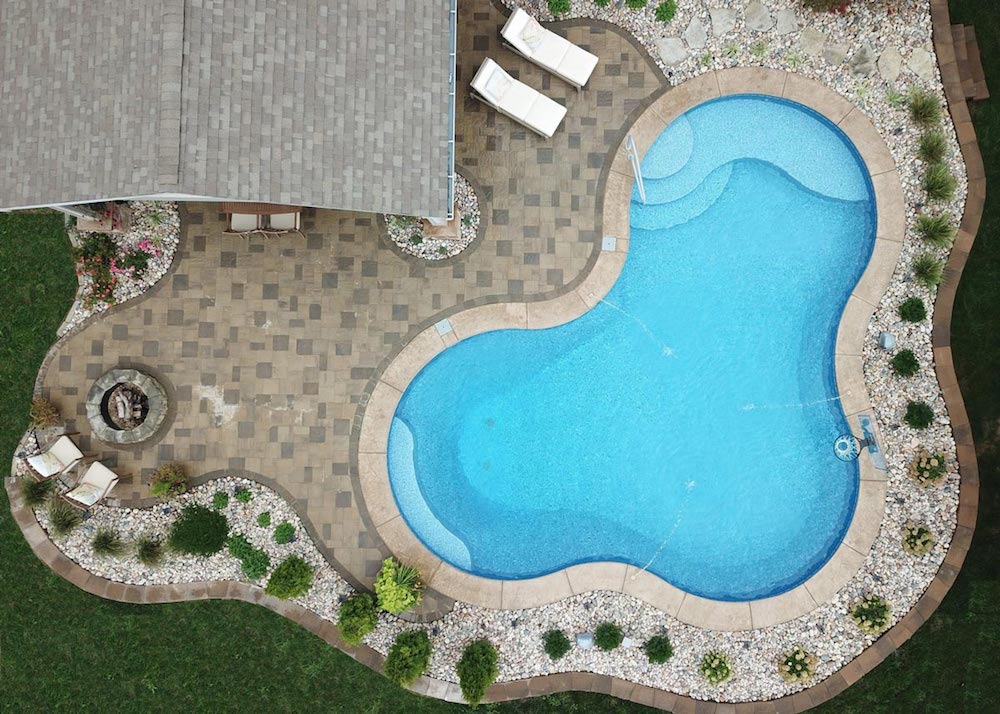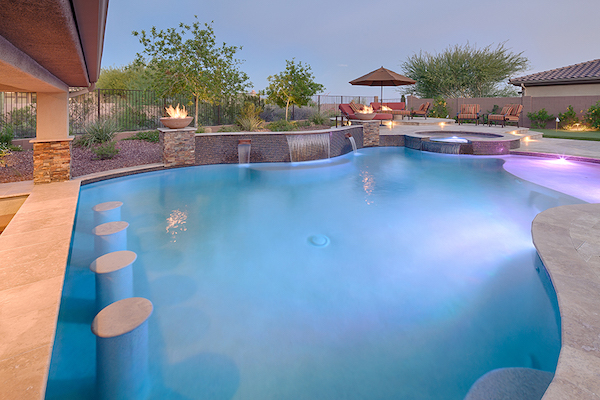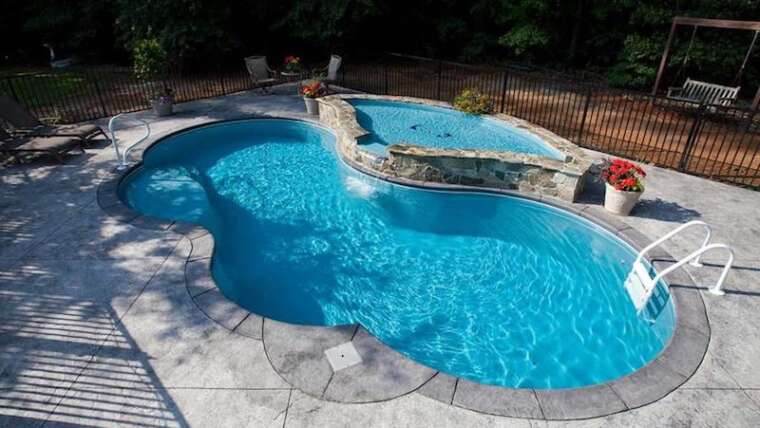Homeowners have the option to choose from several different types of inground swimming pools — namely, concrete, vinyl or fiberglass. If you’re torn between one option or another (or perhaps all three), we encourage you to check out this overview of the different pool types, and the advantages each brings to the table. From these insights, you’ll have a clearer idea of what kind of swimming pool best suits your needs and be ready to take the plunge (pun intended).
Let’s Begin With Concrete Swimming Pools…
Concrete pools are known for the degree of freedom they offer in terms of design (from the size to the depth), as well as their attractive appearance. But they’re also recognized for the amount of time they require from both an installation and maintenance standpoint. Pool installation times can take anywhere up to eight weeks as all work needs to be done on-site, while the high potential for algae and bacteria growth in concrete pools translates into the need for more chemicals and more intensive cleaning procedures.
Note: Concrete pools are often referred to by another name: gunite pools. This type of pool is built using a dry concrete mix (gunite), versus mixed wet concrete (shotcrete).
Now Onto Vinyl Swimming Pools…
From a cost perspective, vinyl pools are recognized as the most economical option, with ample customization still available. In addition to being cheaper at the onset with a faster installation process — which can range anywhere from two to four weeks — this style of inground swimming pool tends to be lower maintenance. (Note that vinyl liners must be replaced at some point, typically every 5 to 10 years.) While not to the same degree as porous concrete pools, it’s important to note vinyl pools are also somewhat susceptible to algae growth and its effects.
Lastly, Fiberglass Swimming Pools…
While fiberglass pools may come with a higher price tag upfront, this initial investment pays for itself over time. Of all the different types of inground pools, fiberglass pools offer the maximum in durability, the least amount of maintenance and the smoothest surface for an enjoyable swim every time. This can be attributed to the use of high-grade, non-porous materials in fiberglass pools, which maintain their beautiful facade over time, resist algae growth and avoid scratches to sensitive hands and feet. While you’ll save on the routine costs of chemicals, you’ll also skip over the costs associated with resurfacing your pool (as you would with concrete) — a cost that can range anywhere from $5,000 to $15,000 every 10 years — or having a new vinyl pool liner installed, which can cost anywhere from $1,400 to $4,800 every 5 to 10 years.
Talk to Blue Impressions About Your Inground Pool Needs
No matter the type of pool design or pool construction you choose, our team can help. Leveraging state-of-the-art products from Latham, the largest manufacturer of fabricated swimming pools in the world, we’ll work with Northeast Ohio homeowners to design and build the backyard pool of their dreams. Request a free quote to get the conversation started!





